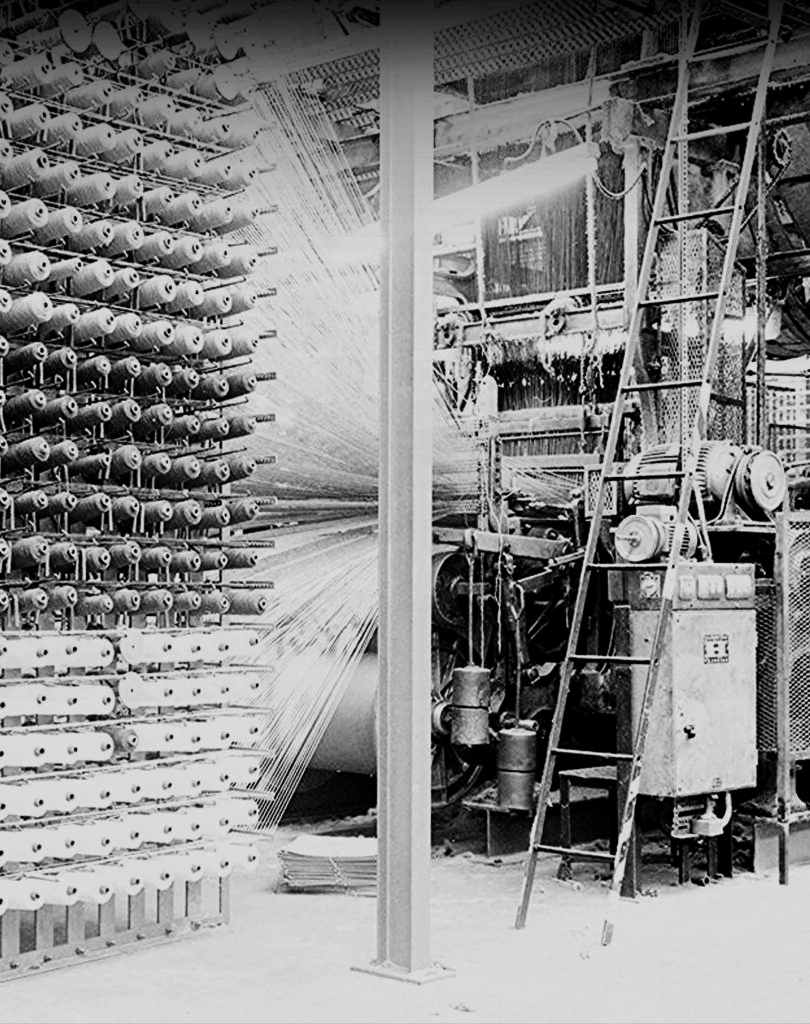The history of Hugh Mackay spans over 100 years. Founded in 1903 by Hugh Mackay himself, the company started from humble beginnings with 11 looms installed in a ‘shed’ in Durham, North East England.
The ethos was simple… ‘Keep quality carpet making alive in the area’.

Humble Beginnings
By 1906, Hugh was joined by his son, L H Mackay, to start the beginnings of the family business. It wasn’t long before the company became a private limited company and was thriving.
The business continued to grow, producing a range of Wilton designs that were on display in retailers & furnishing stores from Hull to Berwick. Their Wilton creations quickly became the standard across the North East of England, so much so, that ‘no home was complete without a Durham Carpet’.
A pivotal moment came in 1929 when Hugh Mackay installed a new 5-Frame Wilton loom at the North East Coast Exhibition. The loom was operated by the then Prince of Wales and saw the start of a long and successful relationship with the Royal Family that still exists to this day.
This event propelled the popularity of Hugh Mackay’s Durham Carpets, leading to new showrooms opening in Glasgow, London, Leeds, Manchester and Birmingham.
In 1935 the renowned Axminster quality carpets were added to the product portfolio as the company continued to expand its offerings.
Hugh Mackay had now achieved recognition as one of the worlds’ great carpet makers.
After the Second World War, in 1953, the company was transformed once again into a public limited company, listed on the stock exchange of Newcastle-Upon-Tyne.
However, disaster struck in 1969 when a fire ravished the factory, bringing production to a virtual stand-still. Within 9 days of the fire, the local businesses around them had banded together to help them get back up and running. Customers supported them too while they spent the following months rebuilding and producing stock once more, proving to Mackay that whilst the business was doing well, it was his customers and friends that made it .
Putting Hugh Mackay Carpets on the Map
A year later the team moved the Wilton production to a larger factory, making the smaller site their main base for all Axminster products. Both sites were at the forefront of the industry world-wide thanks to their innovative equipment and facilities.
This standing in the industry received the highest acknowledgement in 1972 when they were given the Royal Warrant.
In keeping with subsequent demand, an expansion to their largest factory was required. 1976 the expansion saw all production moved to the large site and a brand-new showroom opened in Hamburg, Germany, to cater to the overseas demand that was steadily rising.
At the turn of the century, it became evident that a new premises was required, resulting in a 170,000ft2 purpose built facility being constructed on the outskirts of Durham City to accommodate new equipment, increased demand and expansion of the business.
With a new millennium came a sharp increase in competition from overseas manufacturers. This meant that it was time for Hugh Mackay to reinvent itself once more. Between 2000 and 2006, the company adapted their core focus to their best selling product offerings and looked to build on their strengths within the business, helping to drive the company in line with the wider scope of competitors.
In 2006, Hugh Mackay was purchased by Whitestone Weavers who had built their enviable reputation in the sourcing and supply of all flooring since the early 1990’s.
In 2008 the business relocated again to a newly purpose built, state of the art facility in Hartlepool. The move from the iconic city of Durham was pivotal in continuing to grow and lay the vital groundwork once again for their second century in business.


New Horizons
The acquisition by Whitestone Weavers also meant a coming together of household industry names as the group purchased the renowned Gaskell Mackay Plc.
Bringing these two giants together has seen the upturn in growth needed to stay at the forefront of the industry.
The brands continued to grow, adding new designs and services to the offerings and as such were bought by market leader Victoria Plc in 2014.
Under the Victoria Group, the brands have thrived and have seen an increase in demand each year since. This has set the company up for a bright future ahead with product development and innovation once again at the helm of the business.

Hugh Mackay is a British brand that has stood at the forefront of the carpet industry for over 100 years. Our history in the sector is extensive and has laid the foundation on which we continually grow.
Worcester Rd, Kidderminster, DY10 1JR
E (Residential): [email protected]
01429 892 555
E (Contract): [email protected]
01429 892 525